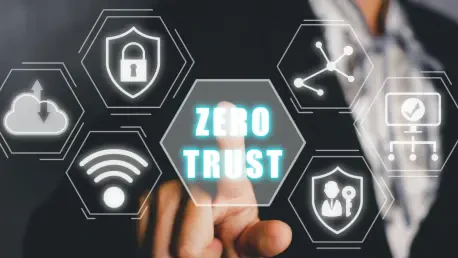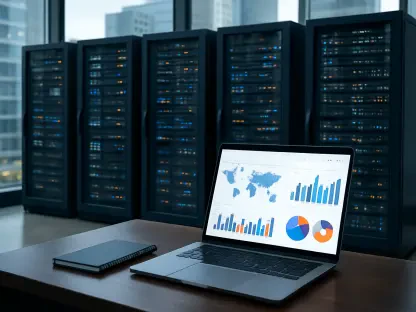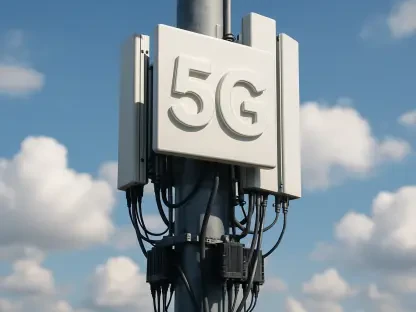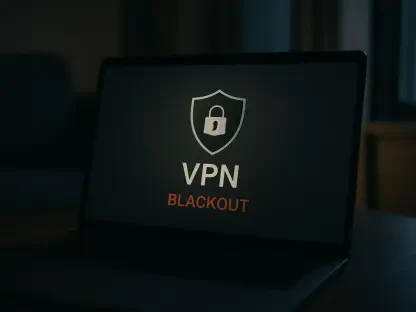The landscape of cybersecurity has transformed drastically, adopting intricate methodologies to combat rising threats. Recently, Cimcor, Inc. announced a groundbreaking move, aligning its integrity monitoring expertise with Zscaler™ frameworks to enhance zero trust security. This initiative marks a pivotal shift, emphasizing not only the need for robust security measures but also highlighting the complex interplay between system integrity and zero trust principles. By focusing on the continual assurance of secure system states and automated compliance enforcement, the integration promises unprecedented advancements in cybersecurity practices, setting a new standard for how organizations can adapt to ever-evolving threats.
This innovative approach attempts to bridge existing gaps in security strategies. Integrity monitoring, long considered a critical component for maintaining the sanctity of IT systems, now intersects dynamically with zero trust frameworks, aiming to automate responses to unauthorized changes, thereby streamlining security functions. It encapsulates the essence of zero trust—not merely relying on perimeter defenses but applying policy-driven controls that adapt to real-time integrity data. As organizations increasingly transition to cloud and hybrid ecosystems, this fusion will prove critical in ensuring operational security, addressing emerging threats with automated, policy-driven interventions, boosting resilience in complex digital environments.
The Power of Dynamic Integrations
By joining forces, Cimcor and Zscaler are redefining security paradigms, leveraging each entity’s strengths to formulate a cohesive, integrated solution. Before this collaboration, achieving seamless connectivity between system integrity monitoring and zero trust frameworks was quite challenging. However, the merger facilitates immediate isolation and restriction of compromised systems, fosters automatic protection mechanisms, and provides ongoing compliance assurance. The ability to restrict unauthorized access quickly and efficiently represents a significant evolution in security operations, drastically altering how organizations can preemptively manage vulnerabilities.
The underlying concept revolves around comprehensive threat detection and automatic response mechanisms designed to tackle sophisticated breaches. This harmonization corroborates a significant need in modern cybersecurity frameworks—integrity monitoring serves as a potent force in maintaining compliance and controlling access dynamically. With real-time insights guiding adjustments to security policies, organizations can now prevent misconfigurations and uphold their security postures effectively, without relying heavily on traditional manual processes. Such innovations align closely with the industry’s strategic movement towards embracing automated security controls in lieu of increasingly complex IT ecosystems.
Enhanced Threat Detection Capabilities
Special features offered by this integration provide notable enhancements to threat detection capabilities. Zscaler Internet Access™ (ZIA™) exemplifies this by creating a milieu where unauthorized files or system anomalies can be swiftly identified by CimTrak. These detections trigger isolation measures like deploying a Zero Trust Browser, effectively limiting access to potentially at-risk systems. The platform further fortifies compliance control by altering browser isolation and security policies in response to deviations from recognized hardening configurations, including standards such as DISA STIGs/CIS Benchmarks. Simultaneously, CimTrak’s vigilance in monitoring ZIA tenant policy amendments ensures the preservation of configuration integrity across the board.
Zscaler Private Access™ (ZPA™) also derives substantial benefits from this system change detection, initiating Zero Trust Browser isolation and recalibrating access controls to safeguard operational stability amid looming threats. Automatic amendments to ZPA policies occur upon detecting inconsistent hardening standards, effectively restricting non-compliant system access until rectification is completed. This judicious application of compliance control enhances security, minimizing operational workloads while proactively mitigating risks. Such initiatives underscore the transformative power behind automated responses, crafting a nearly seamless approach toward real-time threat isolation and management.
Advancing Security Frameworks
Insights from industry leaders further demonstrate the value embedded in these integrations. Robert E. Johnson, III, President and CEO of Cimcor, along with Drew Schnabel, Zscaler’s President and GM, advocate for the dynamic application of zero trust principles at scale, enabled by real-time integrity monitoring. Their perspectives accentuate the necessity of services that allow security teams to optimize operations by enforcing compliance, preventing misconfigurations, and enhancing security postures. These discussions further illustrate the shift towards more automated, less labor-intensive management of cybersecurity protocols, emphasizing efficiency and effectiveness.
The perspectives shared by these industry experts provide actionable insights into the evolution of security frameworks. By interweaving integrity monitoring with zero trust strategies, organizations are better equipped to anticipate potential breaches and automate responses accordingly, elevating the levels at which security measures are applied. The dialogue between Cimcor and Zscaler exemplifies a precedent for seamlessly integrating multiple layers of security to address modern complexities. As cybersecurity continues to evolve, these integrations are poised to form the cornerstone of resilient, adaptive frameworks for combating sophisticated threats, reflecting a promising trajectory for automated solutions within emerging IT landscapes.
Transformative Implications for Future Security
The cybersecurity landscape has evolved dramatically, adopting complex strategies to counteract growing threats. Recently, Cimcor, Inc. made a significant move by integrating its integrity monitoring capabilities with Zscaler™ frameworks, enhancing zero trust security. This shift underscores the necessity for strong security measures, highlighting the intricate relationship between system integrity and zero trust principles. By emphasizing the consistent assurance of secure system states and automated compliance, this integration aims to advance cybersecurity practices significantly, setting a new benchmark for how organizations respond to emerging threats.
This innovative strategy addresses existing security strategy gaps. Integrity monitoring, essential for safeguarding IT systems, now dynamically aligns with zero trust frameworks to automate responses to unauthorized changes. This approach streamlines security operations and exemplifies zero trust—moving beyond perimeter defenses to implement policy-driven controls based on real-time integrity data. With the growing transition to cloud and hybrid environments, this combination is crucial for operational security, addressing threats with automated, policy-driven actions and enhancing resilience in complex digital landscapes.









